Introduction
The DJI Phantom 3 4K stands as a benchmark in consumer drone technology, merging aerial cinematography with high-end engineering. Designed for enthusiasts and professionals alike, this quadcopter captures ultra-high-definition 4K video while delivering a robust flying experience. Its integrated 3-axis gimbal ensures stabilized footage, and the built-in Vision Positioning System enables precision hovering even indoors.
A pivotal milestone in its commercial journey is its FCC certification under FCC ID SS3-WM3251511. This approval—registered by FCC.gov—signifies that the Phantom 3 4K meets stringent electromagnetic emission and wireless communication standards required for legal sale and operation in the United States. While the grant date is listed as “None,” the certification remains an essential gateway to market access, ensuring safety and interference compliance.
In this article, we’ll explore the Phantom 3 4K’s standout features, detailed technical specifications, wireless and RF capabilities, and the engineering marvels revealed through internal component analysis. We’ll also unpack the regulatory compliance insights from its FCC filing and discuss real-world use cases that highlight its versatility.
Key Features & Specifications
The Phantom 3 4K by DJI is engineered for advanced aerial imaging and reliable flight control. Here’s a breakdown of its standout features and technical specifications:
Key Features
- Flight Data Recorder: Automatically logs flight data for post-flight analysis and troubleshooting, enhancing safety and transparency for users.
- Advanced Power Management System: The intelligent flight battery incorporates smart power regulation, optimizing performance and extending lifespan.
- Multiple Flight Modes:
- P-mode (Positioning Mode): Utilizes GPS and Vision Positioning for stable flight and easy control.
- A-mode (Attitude Mode): Disables GPS, relying on barometer and IMU for manual control.
- F-mode (Function Mode): Supports custom flight functions and intelligent navigation.
- Failsafe and Return-to-Home (RTH): If signal is lost or battery runs low, the drone can automatically return to its take-off point, minimizing risk.
- Automatic Flight Data Logging: The onboard Flight Recorder ensures all flight parameters are stored securely for future reference.
- Mobile Device Holder: The remote controller features a robust mount for smartphones or tablets, enabling real-time video view and telemetry via the DJI GO app.
- Auto-Discharging Battery: The battery features an auto-discharge function to prevent swelling and prolong health during storage.
- Short Circuit & Over Discharge Protection: Built-in safeguards protect the battery and electronics from electrical faults.
Technical Specifications
Power & Battery
– Battery Type: DJI Intelligent Flight Battery
– Capacity: 4480 mAh
– Voltage: 15.2 V
– Battery Charger Output: 100W
– Charging Temperature: 0°C to 40°C (32°F to 104°F)
– Auto Sleep: Battery enters sleep mode after 20 minutes of inactivity
– Discharge Cutoff: Battery stops discharging at 12 V
Flight & Control
– Remote Controller: Compatible with the DJI GO app (Android 4.1.2+ / iOS 8.0+)
– Mobile Device Integration: Real-time video streaming and flight telemetry
Camera & Imaging
– Photo Resolution: 12 megapixels
– Video Resolution: 4K video at up to 30 frames per second
– Gimbal: Integrated 3-axis motorized gimbal for stabilized imaging
Sensors & Positioning
– Vision Positioning System: Utilizes two ultrasonic sensors and one monocular camera for precise indoor hovering and obstacle detection
Wireless Capabilities
– Bluetooth: Present (specific details not disclosed)
Additional Safety & Convenience
– Multiple Connectors & Modular Design: Allows for straightforward maintenance and upgrades
– Robust EMI/RFI Shielding: Ensures stable operation in complex RF environments
With these features, the Phantom 3 4K is crafted for both reliability and performance, catering to aerial photographers, videographers, and drone enthusiasts seeking professional-grade results.
Operating Frequencies
The DJI Phantom 3 4K (FCC ID: SS3-WM3251511) operates on the following wireless frequencies and power levels, as detailed in its FCC filing:
| Frequency Range (GHz) | Output Power (mW) | FCC Rule Part |
|---|---|---|
| 2.412 – 2.462 | 264 | 15CMO1 |
These frequencies fall within the globally recognized 2.4 GHz ISM band, commonly used for Wi-Fi and other short-range wireless communications. The output power of 264 mW is typical for robust, interference-resistant video transmission and control links, balancing range and regulatory compliance.
Technology Deep Dive
The Phantom 3 4K’s wireless architecture leverages the 2.4 GHz ISM band, a staple for high-performance Wi-Fi and control systems in modern drones. This frequency range ensures reliable long-range communication between the drone, its remote controller, and connected mobile devices. The specified output power (264 mW) provides ample signal strength for stable HD video transmission and responsive flight controls, even in environments with moderate RF congestion.
Bluetooth is also present, enhancing connectivity—potentially for device pairing or local diagnostics—though the FCC documentation does not detail its specific implementation. The absence of cellular equipment class indicates that all wireless communication is handled over unlicensed spectrum, minimizing operational costs and simplifying regulatory approval.
Operating in this frequency range provides a good balance between data throughput, range, and interference resilience. The high output power, combined with advanced modulation and error correction, supports real-time 4K video streaming and telemetry. The drone’s robust EMI/RFI shielding, as observed in the teardown, further ensures signal integrity, minimizing the risk of dropouts or interference from onboard electronics.
Test reports and FCC summaries confirm compliance with RF emission and immunity standards, verifying that the Phantom 3 4K is engineered for both performance and regulatory adherence.
In-Depth Internal Component Analysis / Teardown
Main PCB with SoC, Memory, and Shielding
The internal electronics of the Phantom 3 4K reveal a high-density, multi-layer main PCB, showcasing DJI’s commitment to advanced engineering. The board features several prominent integrated circuits: a likely main system-on-chip (SoC) for video processing (potentially Ambarella or similar), adjacent to high-speed memory modules. Supporting microcontrollers and power management ICs are strategically placed for efficient subsystem operation. Robust EMI/RFI shielding is evident, with a cast-metal enclosure and soldered metal cans protecting sensitive circuits. The PCB’s dense routing, abundant vias, and modular connectors indicate a design optimized for high-speed data, effective grounding, and reliable camera/gimbal integration. The use of thermal pads and local power regulation components further highlight attention to heat dissipation and electrical stability—essential for 4K video processing during extended flights.
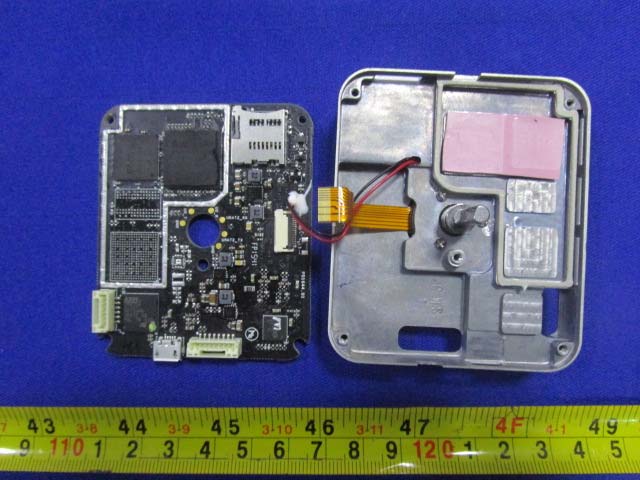
High-Density Main Board with Application Processor
Another perspective of the main PCB assembly reveals two large BGA-packaged ICs, likely the application processor and associated memory (NAND or DDR). Surrounding these are smaller QFP and QFN packages handling power management, signal interfacing, and possibly RF transceivers. The board’s multi-layer construction, via-in-pad technology, and dense SMT assembly underscore its sophistication. Multiple FPC and FFC connectors facilitate modular integration of camera, gimbal, and sensor modules. Power regulation is robust, supporting both logic-level and high-current loads. The absence of visible RF shields on this side suggests they are applied elsewhere in the assembly, but the extensive ground pours and test points indicate meticulous EMI control and manufacturing quality.
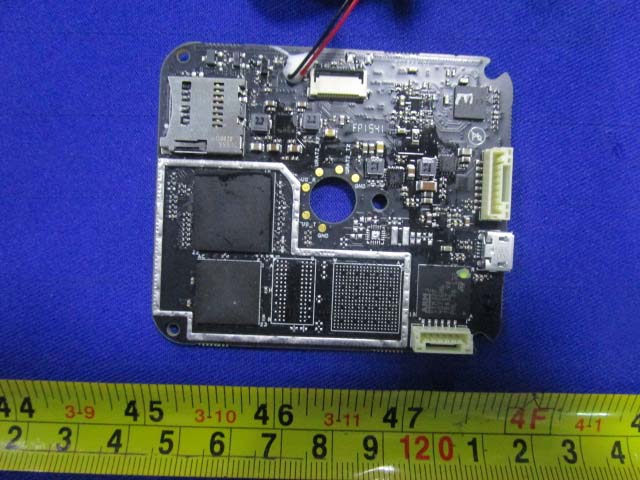
Ambarella A9 SoC for 4K Video Processing
A focused view on the camera/video subsystem highlights the Ambarella A9-A1-RH SoC, a powerhouse for real-time 4K video encoding and advanced image processing. Adjacent to the SoC is a large BGA memory chip, critical for buffering high-bandwidth video streams. The PCB’s black soldermask and multi-layer design support high-speed signal integrity, with via-in-pad and microvia technology ensuring compactness. Robust EMI shielding is evidenced by the soldered can perimeter, and labeled test points provide access for debugging. The FPC connector links to the camera or gimbal, emphasizing the modular, serviceable nature of the design. This layout is indicative of a system built for demanding video capture and reliable storage, as required in aerial cinematography.
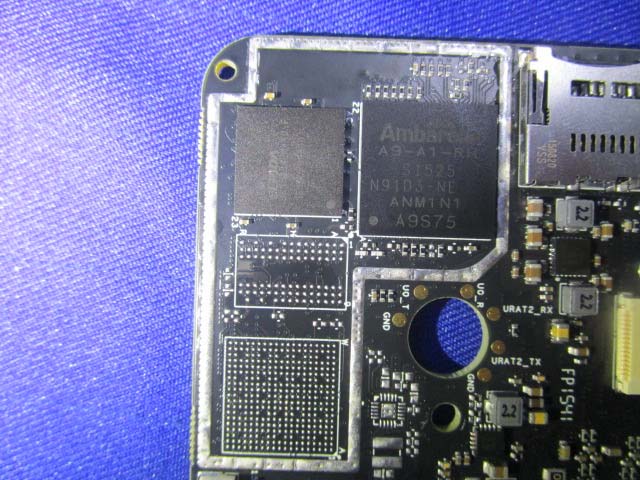
Sensor/Interface PCB with High Component Density
This densely populated circuit board features a large BGA processor or memory chip, surrounded by multiple QFP and QFN ICs likely responsible for microcontroller, power management, or RF interfacing tasks. The board’s black soldermask and fine-pitch routing suggest a multi-layer structure optimized for signal integrity. Two prominent FPC connectors at the top facilitate modular connections to antennas, cameras, or gimbals. Test points and labeled power rails aid diagnostics and manufacturing. The high component density, robust grounding, and modular design reflect DJI’s emphasis on reliability, upgradability, and integration of processing, wireless, and sensor subsystems.

Compact Sensor Module PCB
A smaller PCB reveals a compact, sensor-oriented design, likely part of the vision positioning or gimbal system. The central IC appears to be a microcontroller or sensor interface, complemented by a secondary voltage regulator or amplifier. The large circular cutout hints at integration with a camera lens or optical sensor. Local power regulation is handled by small inductors and capacitors, and the absence of RF components suggests this board focuses on data acquisition or actuation rather than communication. The build quality is precise, with clean soldering and careful component placement, supporting the drone’s advanced sensing and stabilization features.
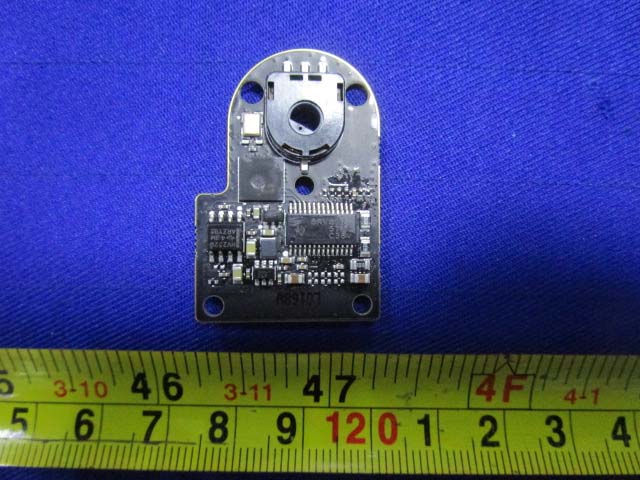
Peripheral Processing Board with Modular Connector
This PCB features a large IC, likely a microcontroller or memory, along with several smaller support chips for data processing or power management. The single white multi-pin connector provides the main interface for power and data, possibly linking to sensor arrays or auxiliary modules. The board’s multi-layer construction, ground pours, and compact layout reflect careful attention to EMI control and signal integrity. This module likely serves a supporting role in data processing or flight control, complementing the core processing boards.
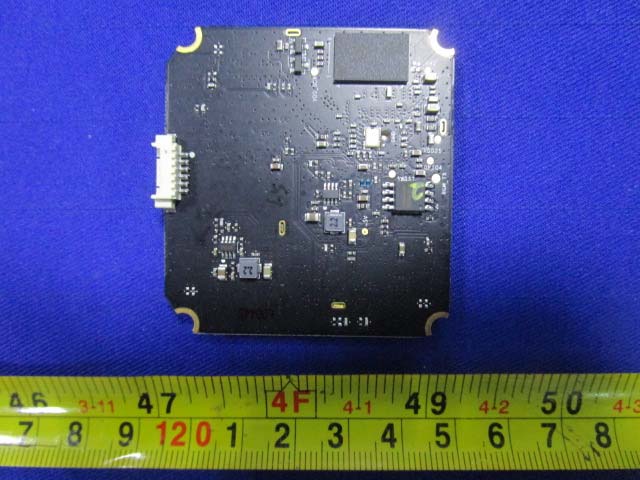
Dedicated GNSS Antenna Module
A circular PCB hosts a ceramic patch antenna, optimized for GNSS (GPS/GLONASS) reception. The robust construction, with a direct-fed antenna and large ground plane, is engineered for high-precision navigation. The attached cable harness connects to the main flight controller, ensuring reliable satellite signal acquisition. The board’s modular design allows for straightforward replacement, and the absence of extraneous components on the antenna side maximizes RF performance. This module is crucial for the Phantom 3 4K’s autonomous flight, return-to-home, and waypoint navigation capabilities.
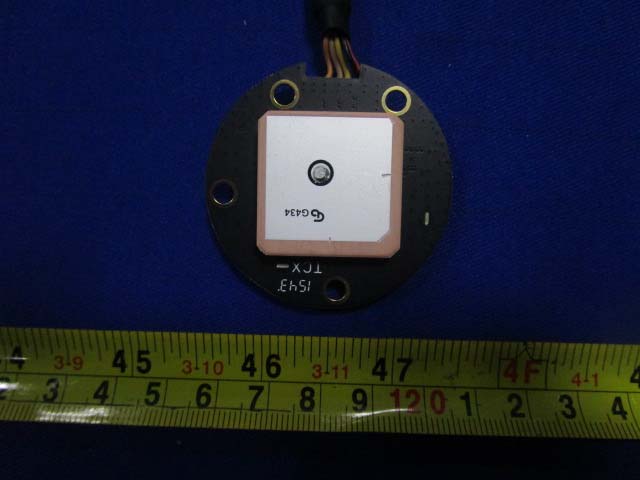
Main Flight or Video Processing Board with Shielding
A large, square PCB features a prominent QFP or LQFP processor, surrounded by smaller ICs for power management and signal processing. The board’s black soldermask, dense layout, and multiple ground vias highlight a multi-layer, EMI-resilient design. A soldered metal shield can covers sensitive analog or RF circuitry, while a multi-pin connector at the bottom edge provides USB and power lines for peripheral integration. The presence of large inductors and ceramic capacitors ensures robust power delivery for high-speed data handling, essential for both flight control and 4K video transmission.
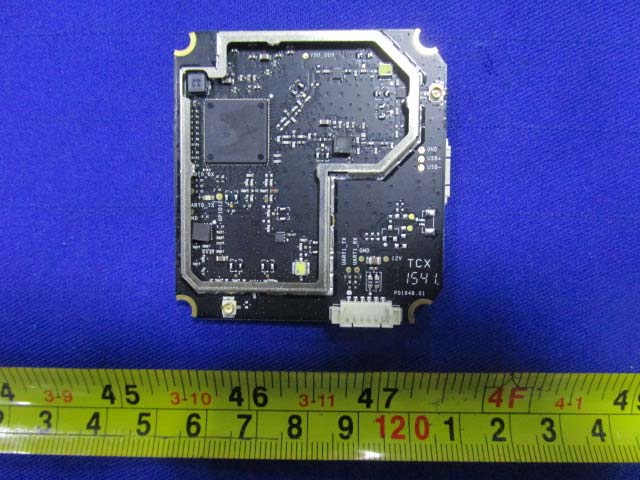
Regulatory Insights & FCC Filing
The FCC ID SS3-WM3251511 certifies that the DJI Phantom 3 4K complies with US standards for radio frequency emissions and electromagnetic compatibility. This approval, registered by FCC.gov (grant date: None), authorizes the device for legal sale and operation within the United States, ensuring it does not interfere with other wireless equipment or exceed safe RF exposure limits.
FCC filings for this product include comprehensive documentation: test reports for RF exposure and electromagnetic compatibility (EMC), internal and external photographs, user manuals, schematics, and block diagrams. These documents provide transparency into the device’s RF performance, internal architecture, and operational safeguards.
Key insights from the user manual highlight the Phantom 3 4K as a next-generation quadcopter capable of capturing 4K video and transmitting HD video signals. Its integrated gimbal stabilizes footage, while the Vision Positioning System supports precise indoor flight. The FCC certification process confirms that these advanced features are delivered within the boundaries of regulatory safety and interference standards, affirming DJI’s commitment to compliance and consumer safety.
Potential Use Cases & Target Audience
The DJI Phantom 3 4K is engineered for versatility, making it a powerful tool across several user profiles and scenarios:
- Aerial Cinematographers & Photographers: Its 12MP stills and 4K video capabilities, paired with a stabilized gimbal and advanced sensor, are ideal for capturing cinematic footage, real estate showcases, and event coverage with exceptional clarity and low noise.
- Technical Enthusiasts & Hobbyists: The sophisticated power management, multiple flight modes, and comprehensive data logging appeal to drone hobbyists and engineers seeking both reliability and customization in their aerial platforms.
- Professional Surveyors & Inspectors: The Vision Positioning System and GNSS navigation module enable precise hovering and waypoint navigation, making the Phantom 3 4K valuable for mapping, surveying, and infrastructure inspection tasks.
With out-of-the-box HD video transmission, robust safety features, and next-generation hardware, the Phantom 3 4K sets a high standard for consumer and professional drone applications.
Conclusion
The DJI Phantom 3 4K (Model: Phantom 3 4K, FCC ID SS3-WM3251511) exemplifies the convergence of advanced engineering, regulatory compliance, and user-focused design in modern aerial platforms. Its FCC certification ensures safe, interference-free operation, while its internal architecture—revealed through detailed teardown analysis—demonstrates DJI’s expertise in high-speed video processing, robust wireless communication, and modular integration. Whether for professional cinematography, technical exploration, or precision surveying, the Phantom 3 4K remains a compelling choice, setting the benchmark for reliability and performance in the competitive drone market.